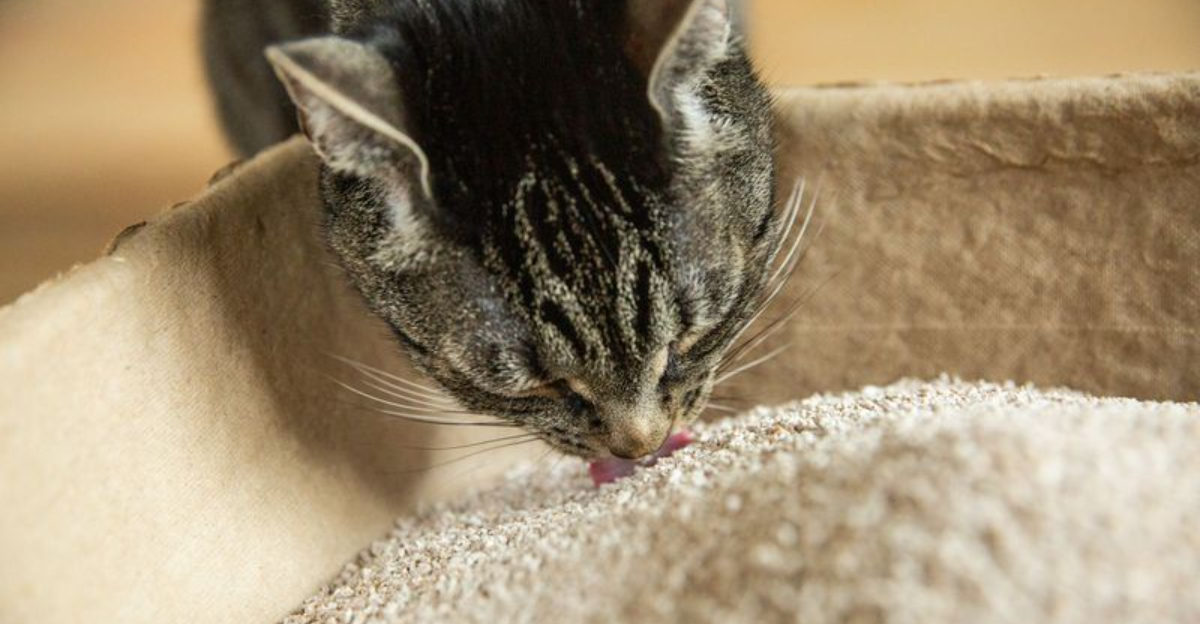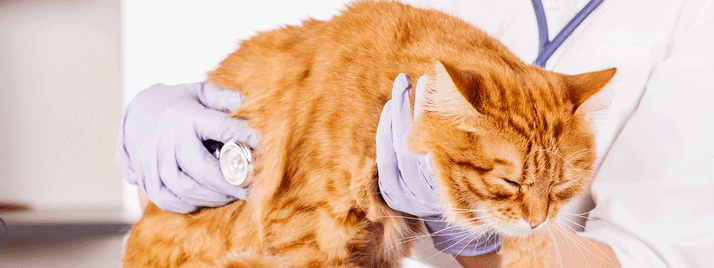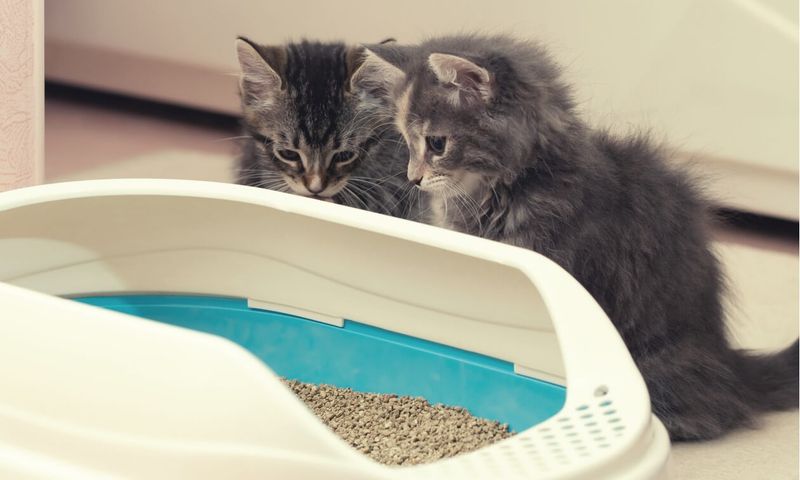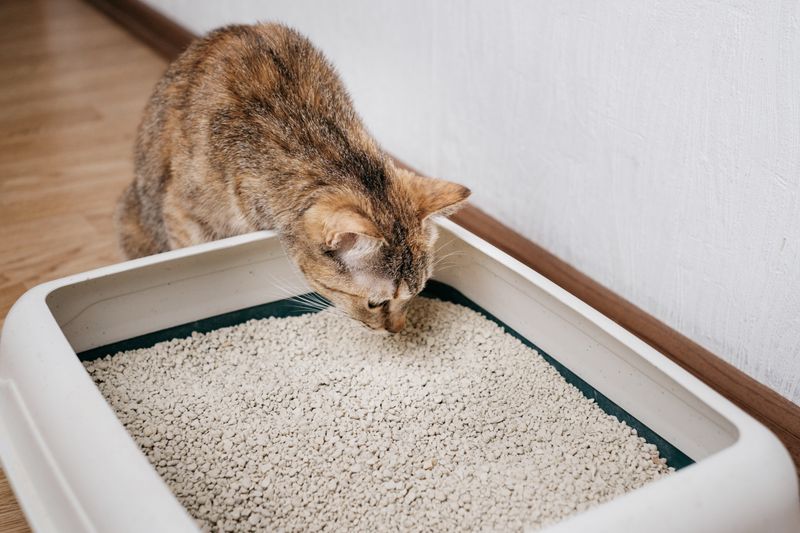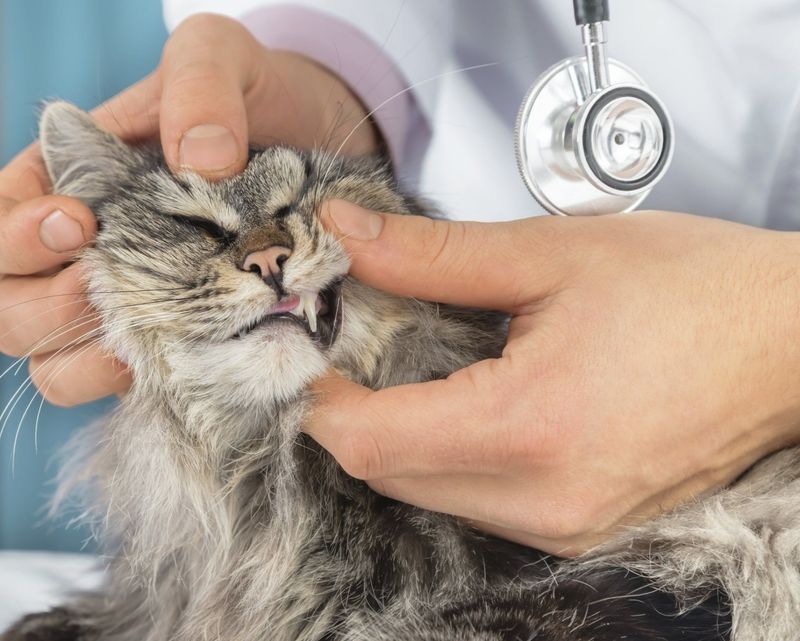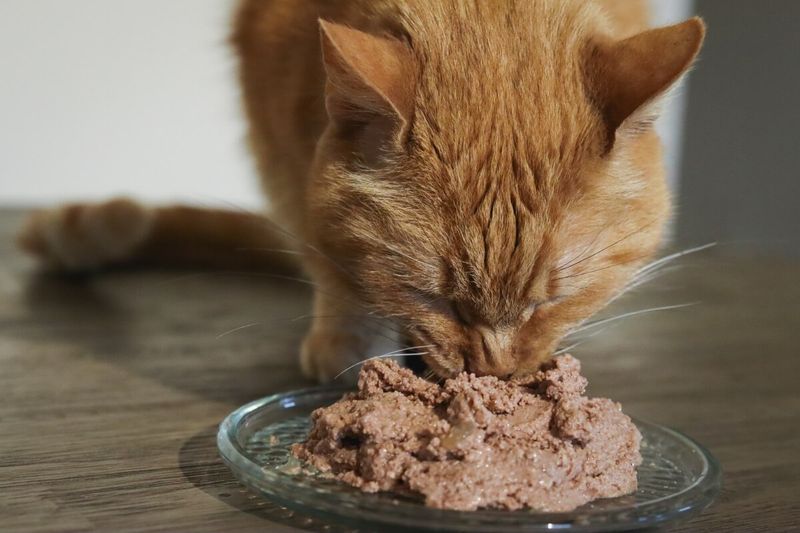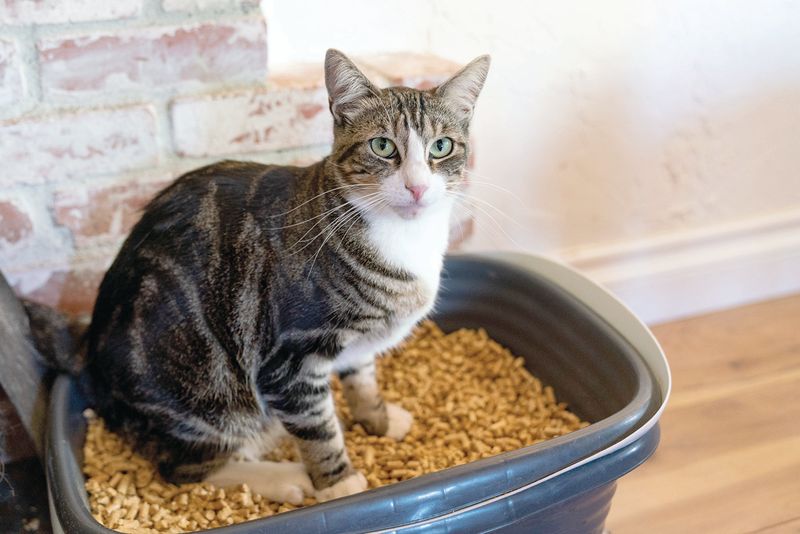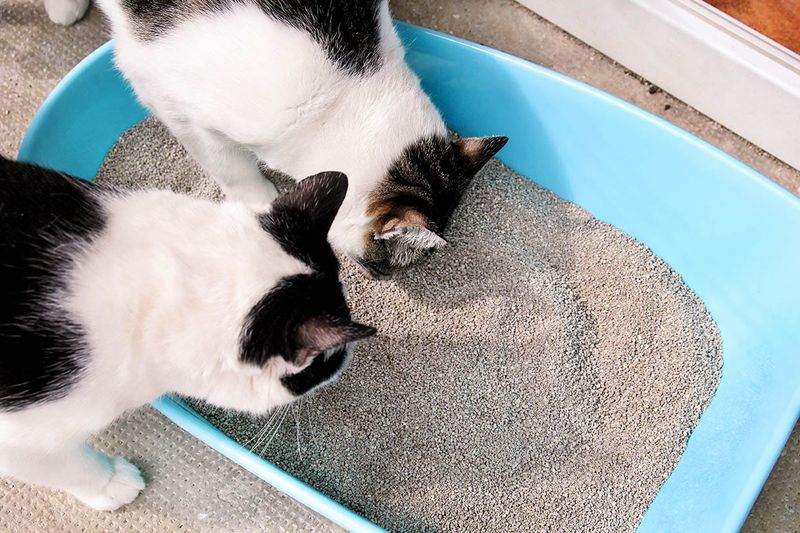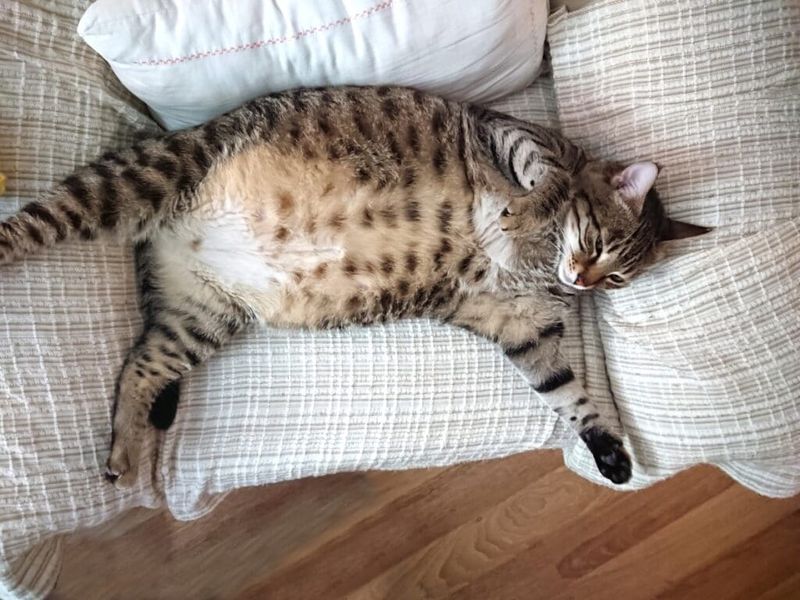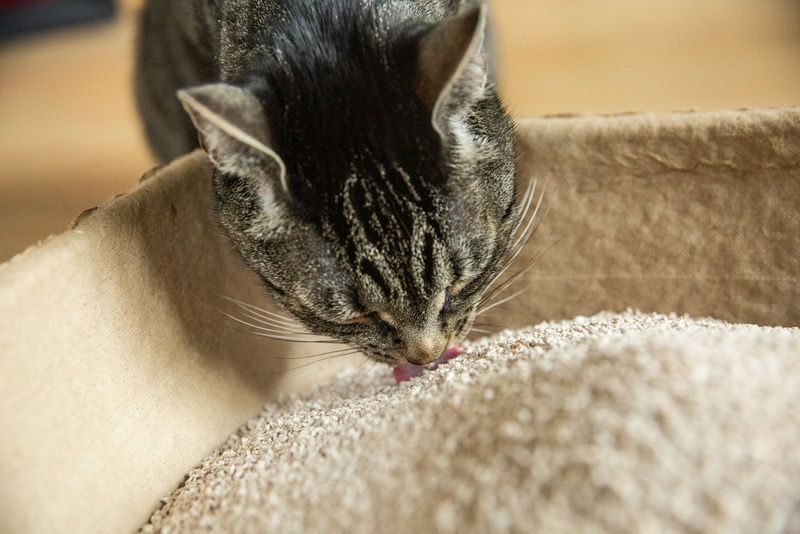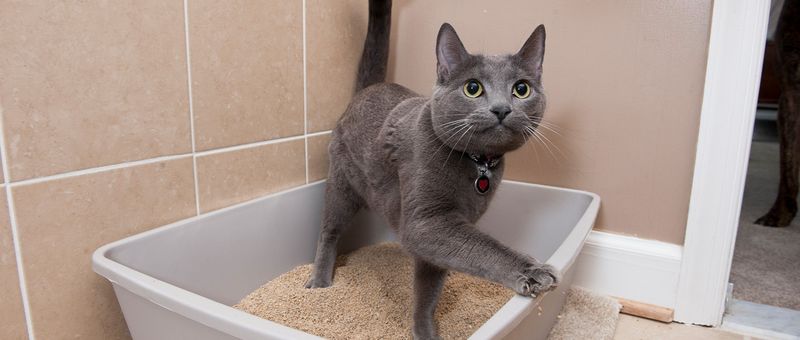📖 Table of Content:
- 1. Nutritional Deficiencies
- 2. Anemia (Iron Deficiency)
- 3. Pica Syndrome
- 4. Curiosity (Especially in Kittens)
- 5. Underlying Health Issues
- 6. Stress, Anxiety, or Boredom
- 7. Gastrointestinal Disorders
- 8. Poor-Quality Diet
- 9. Taste or Texture Preference
- 10. Accidental Consumption
- 11. Pregnancy or Nursing Mothers
- 12. Poisoning or Toxicity Concerns
- 13. Switching to a New Litter Type
If you’ve ever caught your cat munching on litter, you might be puzzled—or even concerned—by this strange behavior. While it may seem like an odd quirk, eating litter can be a sign of an underlying issue that shouldn’t be ignored. Cats are naturally curious creatures, and sometimes their curiosity leads them to explore non-food items. However, if your feline friend frequently ingests litter, it could indicate anything from a nutritional deficiency to a medical condition that requires attention.
Litter consumption, also known as pica, is relatively uncommon but can stem from a variety of causes. Some cats eat litter due to simple exploration, especially kittens who are still learning about their environment. Others might be experiencing health problems such as anemia, gastrointestinal disorders, or stress-induced behaviors. In some cases, a cat’s diet may be lacking essential nutrients, prompting them to seek alternative sources—even if that means nibbling on their litter box contents. Understanding the reasons behind this behavior is key to ensuring your cat’s health and well-being.
We’ll discuss when you should be concerned, what steps to take to stop this behavior, and how to keep your furry friend safe. Whether this is a one-time occurrence or a recurring issue, learning the potential causes can help you determine if your cat needs a dietary adjustment, a stress-free environment, or a visit to the vet.
1. Nutritional Deficiencies
A lack of essential nutrients in a cat’s diet can lead to unusual cravings, including eating litter. When a cat isn’t getting enough vitamins, minerals, or essential amino acids, their body may instinctively seek alternative sources. Some cats with low calcium, fiber, or vitamin B deficiencies have been known to consume non-food items. Poor-quality or improperly balanced diets often contribute to these deficiencies, particularly if the food lacks sufficient animal-based protein. Switching to a high-quality, species-appropriate diet can sometimes resolve this issue. To ensure proper nutrition, pet owners should consult a veterinarian to determine if their cat needs dietary supplements or a new feeding plan. Addressing deficiencies early can prevent long-term health complications and eliminate the behavior.
2. Anemia (Iron Deficiency)
Anemia, which is a condition caused by a low red blood cell count, can sometimes drive cats to eat litter. The lack of oxygen in the blood due to anemia can cause lethargy, weakness, and strange cravings, such as consuming non-food substances. Clay-based litter, in particular, contains trace amounts of minerals, which may attract an anemic cat looking for additional iron. This condition can develop from chronic illness, parasitic infections, or internal bleeding, making it essential to identify the root cause. A veterinarian can diagnose anemia through blood tests and recommend appropriate treatments such as dietary changes, iron supplements, or medications. Ignoring anemia can lead to worsening health problems, including severe fatigue and organ damage. Therefore, if a cat is consistently eating litter along with showing signs of weakness, pale gums, or weight loss, prompt veterinary attention is crucial.
3. Pica Syndrome
Pica is a behavioral condition in which cats compulsively eat non-food items, including litter. While the exact causes of pica remain unclear, it is often linked to underlying medical, psychological, or genetic factors. Cats with pica may also chew on plastic, fabric, cardboard, or paper, in addition to litter. Some breeds, like Siamese and Burmese cats, are more prone to this condition due to genetic predisposition. Stress, boredom, or dietary imbalances can also contribute to pica, making enrichment and proper nutrition important preventive measures. Addressing the root cause often involves a combination of environmental enrichment, behavioral training, and dietary adjustments. If the behavior persists, a veterinary consultation is necessary to rule out serious health concerns.
4. Curiosity (Especially in Kittens)
Kittens often explore their environment by tasting and chewing objects, which can include litter. During the weaning phase, young cats are particularly prone to nibbling on non-food items as they transition from milk to solid food. Since kittens rely on their senses to understand the world, they might instinctively sample their litter box contents out of sheer curiosity. Most kittens grow out of this phase naturally as they learn which items are edible and which are not. However, ingesting clumping litter can be dangerous, as it may cause blockages in the digestive tract. To prevent this, kitten-safe alternatives such as paper-based or pellet litter can be used until they mature. If the habit persists beyond kittenhood, further investigation into dietary needs or health concerns may be necessary.
5. Underlying Health Issues
Some medical conditions can cause unusual eating behaviors, including the consumption of litter. Cats suffering from kidney disease, diabetes, or hyperthyroidism often experience changes in appetite, energy levels, and metabolism. When their bodies struggle to process nutrients properly, they may develop strange cravings, including the urge to eat litter. Hyperthyroidism, in particular, causes an increase in hunger and unusual food-seeking behavior, while kidney disease can lead to mineral imbalances. Detecting these illnesses early is essential, as they can be managed with medication, dietary adjustments, and lifestyle changes. Routine veterinary checkups can help identify these conditions before symptoms become severe. If a cat is eating litter along with other worrying signs like excessive thirst, weight loss, or vomiting, immediate veterinary attention is recommended.
6. Stress, Anxiety, or Boredom
Environmental stressors or a lack of mental stimulation can lead to compulsive behaviors, including eating litter. Cats are sensitive animals, and changes in their environment—such as moving to a new home, the arrival of a new pet, or changes in their routine—can trigger anxiety-driven behaviors. Some cats develop stress-related habits, like excessive grooming, over-eating, or chewing on non-food objects, including litter. Boredom can also contribute to this behavior, particularly in indoor cats that lack enrichment and physical activity. Providing interactive toys, climbing structures, and consistent routines can help reduce stress and prevent these behaviors. Pheromone diffusers or calming supplements may also be beneficial for highly anxious cats. If stress-related pica persists, consulting a vet or animal behaviorist can help identify effective solutions.
7. Gastrointestinal Disorders
Digestive issues, such as inflammatory bowel disease (IBD) or food allergies, can lead cats to develop unusual eating habits. Cats with chronic stomach discomfort may chew on non-food items, like litter, in an attempt to soothe their digestive tract. If a cat frequently eats litter along with experiencing vomiting, diarrhea, or inconsistent bowel movements, a gastrointestinal disorder could be the culprit. Dietary changes, prescription food, and medication are often necessary to manage these conditions. Left untreated, gastrointestinal problems can lead to malnutrition, dehydration, and ongoing discomfort for the cat. A vet can perform tests to diagnose the issue and recommend appropriate treatment. Monitoring a cat’s eating habits and litter box behavior can provide key clues in identifying these disorders early.
8. Poor-Quality Diet
The nutritional value of a cat’s diet directly impacts its overall health and behavior. Cats that consume low-quality food, particularly those lacking in animal-based protein and essential nutrients, may instinctively seek alternative sources to compensate for deficiencies. Cheap commercial foods often contain high amounts of fillers, carbohydrates, and plant-based proteins, which do not meet a cat’s strict carnivorous needs. If a cat is eating litter, it could be an attempt to obtain missing minerals or fiber. Feeding a balanced, high-protein diet with high-quality ingredients can help resolve this issue. Consulting a veterinarian about the best diet for a cat’s specific needs can prevent long-term health problems. Ensuring access to fresh water and a proper feeding schedule can also promote better eating habits.
9. Taste or Texture Preference
Surprisingly, some cats may simply enjoy the texture or taste of their litter. Clay-based and corn-based litters, for example, can have appealing textures that certain cats find interesting to chew on. This preference could be linked to sensory exploration, boredom, or even a behavioral quirk. While occasional nibbling may not be harmful, regular ingestion can lead to digestive issues or blockages. Switching to a different type of litter, such as paper pellets or wood-based options, may help deter this behavior. Providing appropriate chew toys or treats can also redirect the cat’s attention. If a cat continues to eat litter despite these changes, a deeper medical or behavioral issue may be at play.
10. Accidental Consumption
Sometimes, a cat may not intentionally eat litter but instead ingest small amounts while grooming. This is particularly common in long-haired breeds, where litter particles can cling to fur and be swallowed during cleaning. While occasional ingestion may not cause harm, consistent consumption—especially of clumping litter—can lead to intestinal blockages. Keeping the litter box clean and choosing a low-dust, non-clumping litter can help minimize accidental ingestion. Regular grooming and wiping a cat’s paws after using the litter box may also reduce this risk. If a cat experiences digestive issues after accidental ingestion, a vet should be consulted. Owners should also monitor their cat’s litter-eating habits to distinguish between accidental and intentional behavior.
11. Pregnancy or Nursing Mothers
Pregnant and nursing cats undergo significant hormonal and nutritional changes, which may lead to unusual cravings, including eating litter. As their bodies work hard to support growing kittens, they may seek additional minerals and nutrients they feel they are lacking. Calcium, iron, and other essential vitamins become even more critical during this period, and a deficiency could drive a cat to ingest non-food substances. In some cases, hormonal shifts might also trigger pica-like behaviors that resolve after birth or weaning. Providing a well-balanced, high-protein diet formulated for pregnancy and lactation can help prevent this issue. Regular veterinary checkups ensure that the mother cat is receiving all necessary nutrients and that any unusual behaviors are monitored. If litter consumption continues postpartum, further examination may be needed to rule out underlying health concerns.
12. Poisoning or Toxicity Concerns
Exposure to toxins can sometimes lead to strange behavioral changes, including eating litter. Certain toxic substances, such as heavy metals (lead or zinc) or household chemicals, can affect neurological function and cause pica-like symptoms. If a cat suddenly develops an obsession with eating non-food items, including litter, poisoning should be considered as a potential cause. Additional signs of toxicity may include drooling, vomiting, tremors, or lethargy, all of which require immediate veterinary attention. Identifying and removing potential toxic sources—such as old paint, unsafe houseplants, or contaminated water—can help prevent poisoning. Blood tests can confirm if a cat has been exposed to harmful substances, allowing for timely treatment. Since poisoning can be life-threatening, swift action is essential whenever abnormal behavior is observed.
13. Switching to a New Litter Type
Introducing a new type of litter can sometimes cause a cat to investigate it by tasting. If the litter has a different texture, scent, or composition, some cats may be drawn to nibbling on it out of curiosity. Natural or biodegradable litters made from corn, wheat, or walnut shells may have a mild food-like smell that encourages tasting. While occasional sampling is generally harmless, regular consumption can pose digestive risks. Gradually transitioning to a new litter by mixing it with the old one can help cats adjust without excessive curiosity. If a cat continues eating the new litter, switching back to a previous brand or trying a non-edible option, like paper-based pellets, might be necessary. Encouraging alternative forms of enrichment, such as puzzle feeders or cat grass, can also divert attention away from the litter box.
